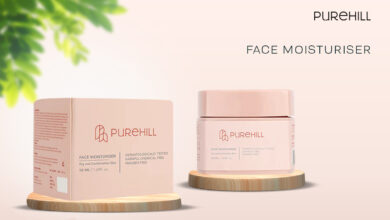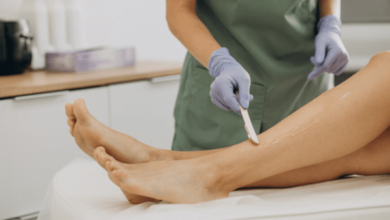Sun Protection Cream: Importance, Types, and Tips for Optimal Skin
Introduction:
In an era where awareness of skin health and the damaging effects of UV radiation is paramount, the use of sun protection has become an integral aspect of daily skincare. As the first line of defense against the sun’s harmful rays, sun protection play a crucial role in preventing skin damage, premature aging, and reducing the risk of skin cancer. This comprehensive guide aims to delve into the importance of sun protection, explore the different types of sunscreens available, and provide valuable tips for achieving optimal skin health.
I. Understanding the Sun’s Impact on the Skin:
To comprehend the necessity of sun protection cream, it is essential to grasp the impact of UV radiation on the skin. The sun emits ultraviolet (UV) rays, categorized into UVA and UVB rays, both of which can cause various skin issues. UVA rays penetrate the skin deeply, leading to premature aging, while UVB rays are responsible for sunburns and can contribute to skin cancer. By understanding these effects, individuals can appreciate the vital role that sun protection plays in safeguarding their skin.
II. Types of Sun Protection Creams:
A. Broad-Spectrum Sunscreens:
Broad-spectrum sunscreens protect against both UVA and UVB rays, offering comprehensive defense against a wide range of potential skin damage. These sunscreens typically contain a combination of chemical and physical UV filters to ensure broad-spectrum coverage.
B. Chemical Sunscreens:
Chemical sunscreens absorb UV radiation and transform it into heat, preventing it from penetrating the skin. Ingredients such as avobenzone, octocrylene, and oxybenzone are commonly found in chemical sunscreens, providing effective protection when applied properly.
C. Physical Sunscreens:
Physical sunscreens, also known as mineral sunscreens, create a protective barrier on the skin’s surface that reflects UV rays. Zinc oxide and titanium dioxide are common ingredients in physical sunscreens, offering a gentler alternative for those with sensitive skin.
III. Choosing the Right Sun Protection Cream:
A. SPF (Sun Protection Factor) Selection:
Understanding the Sun Protection Factor is crucial when selecting an appropriate sunscreen. SPF indicates the level of protection against UVB rays, with higher SPF values signifying increased protection. Dermatologists generally recommend using a broad-spectrum sunscreen with SPF 30 or higher for daily use.
B. Skin Type Considerations:
Different skin types have varying levels of sensitivity to the sun. Individuals with fair or sensitive skin may benefit from higher SPF formulations, while those with darker skin tones may still require protection against UV damage. Selecting a sunscreen that suits your skin type ensures optimal efficacy and protection.
C. Water-Resistant Formulas:
For those engaging in water-related activities or activities that induce sweating, choosing a water-resistant sun protection is essential. These formulations adhere better to the skin, maintaining their effectiveness even in challenging conditions.
IV. Application Techniques for Maximum Efficacy:
A. Proper Application:
Applying sun protection correctly is crucial for its effectiveness. Most individuals do not use an adequate amount of sunscreen, resulting in decreased protection. Applying approximately one ounce (about a shot glass full) for each application is recommended for the entire body.
B. Reapplication Guidelines:
Frequent reapplication is vital, especially during prolonged sun exposure. Sunscreen should be reapplied every two hours and more frequently if swimming or sweating heavily. Neglecting to reapply may compromise the sunscreen’s protective abilities.
V. Sun Protection Beyond Sunscreen:
While sun protection are indispensable, adopting additional protective measures is advisable for comprehensive skin care.
A. Sun-Protective Clothing:
Wearing sun-protective clothing, such as long-sleeved shirts, wide-brimmed hats, and sunglasses, enhances overall sun protection. These items act as physical barriers, reducing direct exposure to UV radiation.
B. Seeking Shade:
Limiting sun exposure during peak hours (10 a.m. to 4 p.m.) reduces the risk of UV damage. Seeking shade whenever possible, especially during intense sunlight, complements the use of sun protection.
VI. Addressing Common Concerns and Myths:
A. Sunscreen and Vitamin D Production:
Contrary to a common misconception, using sunscreen does not completely hinder the production of vitamin D. Individuals can still obtain sufficient vitamin D through dietary sources and controlled sun exposure.
B. Allergy and Sensitivity Concerns:
Individuals with allergies or sensitivities may opt for sunscreens formulated for sensitive skin or those labeled as hypoallergenic. Patch testing new products before regular use helps identify potential adverse reactions.
VII. Sun Protection for Specific Demographics:
A. Sun Protection for Children:
Children’s skin is more delicate and susceptible to sun damage. Using sunscreens specifically designed for children and incorporating protective clothing and shade is crucial for their well-being.
B. Sun Protection during Pregnancy:
Pregnant women should prioritize sun protection to prevent melasma (darkening of the skin) and other pigmentation issues associated with hormonal changes. Choosing sunscreens with safe ingredients during pregnancy is recommended.
VIII. The Future of Sun Protection:
Advancements in skincare technology continue to shape the future of sun protection. Innovations such as environmentally friendly formulations, improved water resistance, and enhanced efficacy against multiple types of UV radiation are anticipated, ensuring ongoing progress in sun protection science.
Conclusion:
In conclusion, the significance of sun protection cream in maintaining healthy skin cannot be overstated. By understanding the impact of UV radiation, selecting the right type of sunscreen, and adopting proper application techniques, individuals can fortify their skin against sun damage. Additionally, embracing complementary protective measures and dispelling common myths surrounding sun protection contribute to a holistic approach to skin health. As the skincare industry evolves, staying informed about the latest developments ensures that individuals can make informed choices for optimal sun protection and overall well-being.



